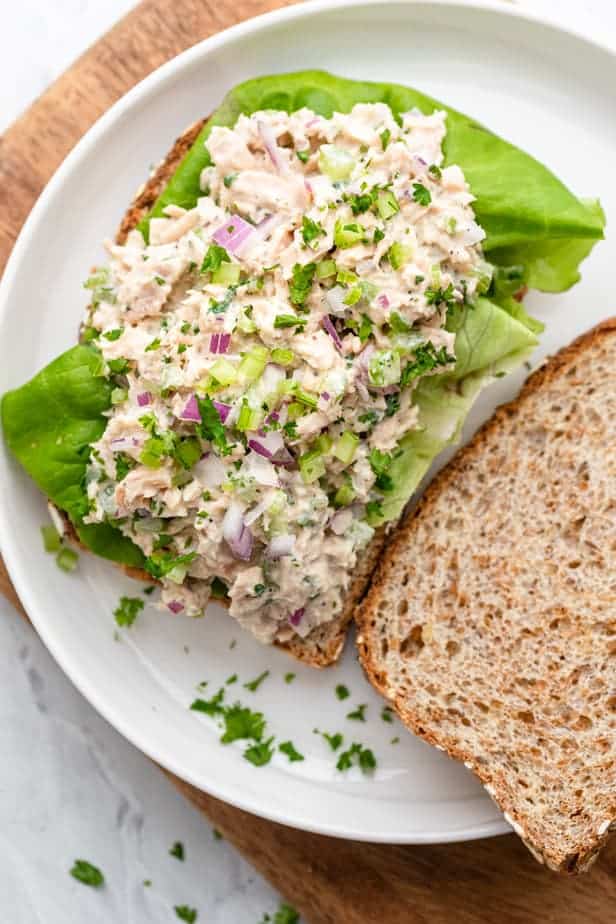The Psychology Of Comfort Foods: Why Tuna Salad Is A Favorite
The Psychology Of Comfort Foods: Why Tuna Salad Is A Favorite
Factors Influencing Tuna Salad’s Popularity
Subjective Perception and Emotional Appeal
People contemplate tuna salad a consolation food as a outcome of its familiarity and nostalgic associations. It often evokes memories of childhood and home cooking, creating a sense of heat and contentment.

The elements in tuna salad also contribute to its comforting qualities. Tuna is a wealthy source of protein and omega-3 fatty acids, which have been linked to improved mood and cognitive function. Celery and onion add freshness and crunch, whereas mayonnaise supplies a creamy, rich texture.
The act of eating tuna salad may additionally be comforting. The easy, repetitive motions of scooping and chewing can be soothing and calming. Furthermore, sharing tuna salad with others can foster a sense of connection and belonging.
Overall, the familiarity, nostalgic associations, nutritional worth, and sensory expertise of tuna salad contribute to its recognition as a comfort food.
Physiological Effects of Ingredients
The popularity of tuna salad may be attributed to varied factors. Its comfort, affordability, and versatility make it a go-to possibility for quick and simple meals. The presence of healthful components like Tuna Salad Healthy, rich in omega-3 fatty acids, and greens supplies nutritional benefits.
Physiologically, the components in tuna salad have specific effects. Tuna, a wealthy source of omega-3s, has anti-inflammatory properties and supports coronary heart health. Celery and onion, containing antioxidants, may protect against mobile harm. Mayonnaise, while high in fats, supplies a creamy texture and adds calories, making it a satisfying option.
Taste and Flavor Profile
Combination of Sweet, Savory, and Salty Elements
The mixture of sweet, savory, and salty elements creates a complex and satisfying taste profile that appeals to many people.
Sweetness is a style that is usually related to pleasure and comfort, and it can help to steadiness out the opposite flavors in a dish.
Savory flavors are those which might be typically associated with meat, cheese, and different rich foods, they usually can add a sense of depth and richness to a dish.
Salty flavors can help to reinforce the other flavors in a dish and can also assist to create a way of stability.
When these three parts are mixed in the proper proportions, they can create a flavor profile that is each satisfying and comforting.
Mouthfeel and Texture
Taste and Flavor Profile
- Sweet: Sugary, honey-like, fruity
- Salty: Savory, salty, briny
- Sour: Acidic, tangy, citrus-like
- Bitter: Unpleasant, astringent, medicinal
- Umami: Savory, meaty, glutamic
Mouthfeel and Texture
- Smooth: Velvety, creamy, silky
- Rough: Gritty, grainy, fibrous
- Thick: Viscous, syrupy, gelatinous
- Thin: Watery, liquid, runny
- Chewy: Tough, elastic, rubbery
Cultural and Societal Influences
Historical and Regional Variations
Not relevant to the immediate.
Nostalgia and Familiarity
Cultural and Societal Influences
Nostalgia and Familiarity in Language
Health-Related Factors
Nutritional Value and Nutrient Composition
Health-Related Factors:
–
High in protein
–
Low in calories
–
Good supply of omega-3 fatty acids
–
May help cut back the danger of heart illness and stroke
–
May help enhance mind function
Nutritional Value:
–
One serving (1/2 cup) of tuna salad contains:
–
120 calories
–
20 grams of protein
–
5 grams of fat
–
1 gram of carbohydrates
Nutrient Composition:
–
Tuna salad is an effective source of the next nutrients:
–
Protein
–
Omega-3 fatty acids
–
Vitamin D
–
Selenium
–
Iodine
Comfort and Well-Being Association
Obesity is a complex problem involving the interaction of a quantity of biological, psychological, behavioral, and environmental factors.
The article “The Psychology of Comfort Foods: Why Tuna Salad is a Favorite” does not immediately tackle the connection between health-related elements, consolation, and well-being.


Recent Posts
- How Gluten-Free Fried Chicken Differs From Traditional Fried Chicken
- Blueberries And Their Use In Home Remedies
- How Blueberries Are Used In Edible Decorations
- How Blueberries Became A Superfood
- The Cultural Significance Of Blueberries In Indigenous Communities
- The Evolution Of Blueberry Farms Over Decades
- Can Blueberries Improve Your Skin Health
- The Cultural Importance Of Blueberries In Nordic Countries
- The Economic Importance Of Blueberries
- The History Of Blueberries In Native American Diets
- The Role Of Blueberries In Diabetes Management
- The History Of Blueberries And Their Cultivation
- Blueberries In Contemporary Art Installations
- The History Of Blueberry Stains And Their Remedies
- How Blueberries Are Used In Aromatherapy
- The Science Of Blueberry Preservation Techniques